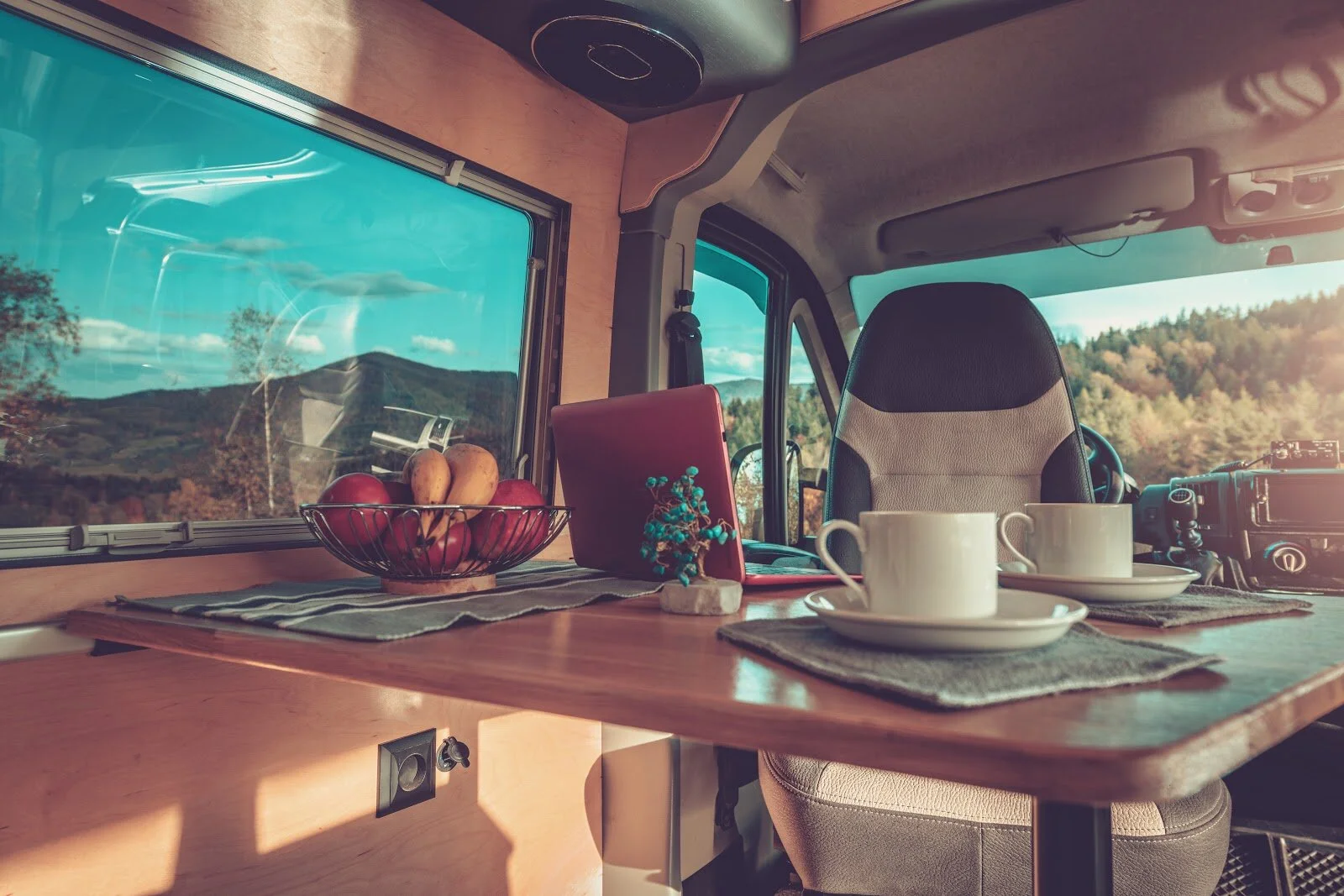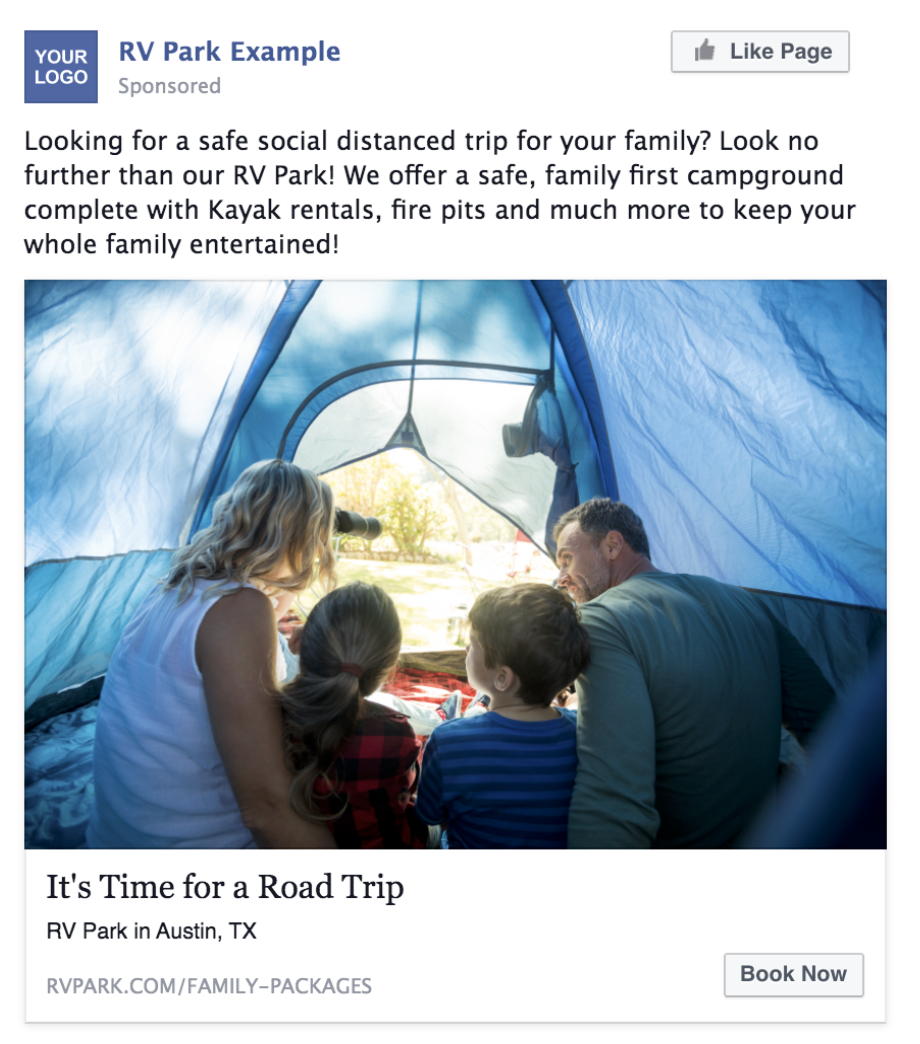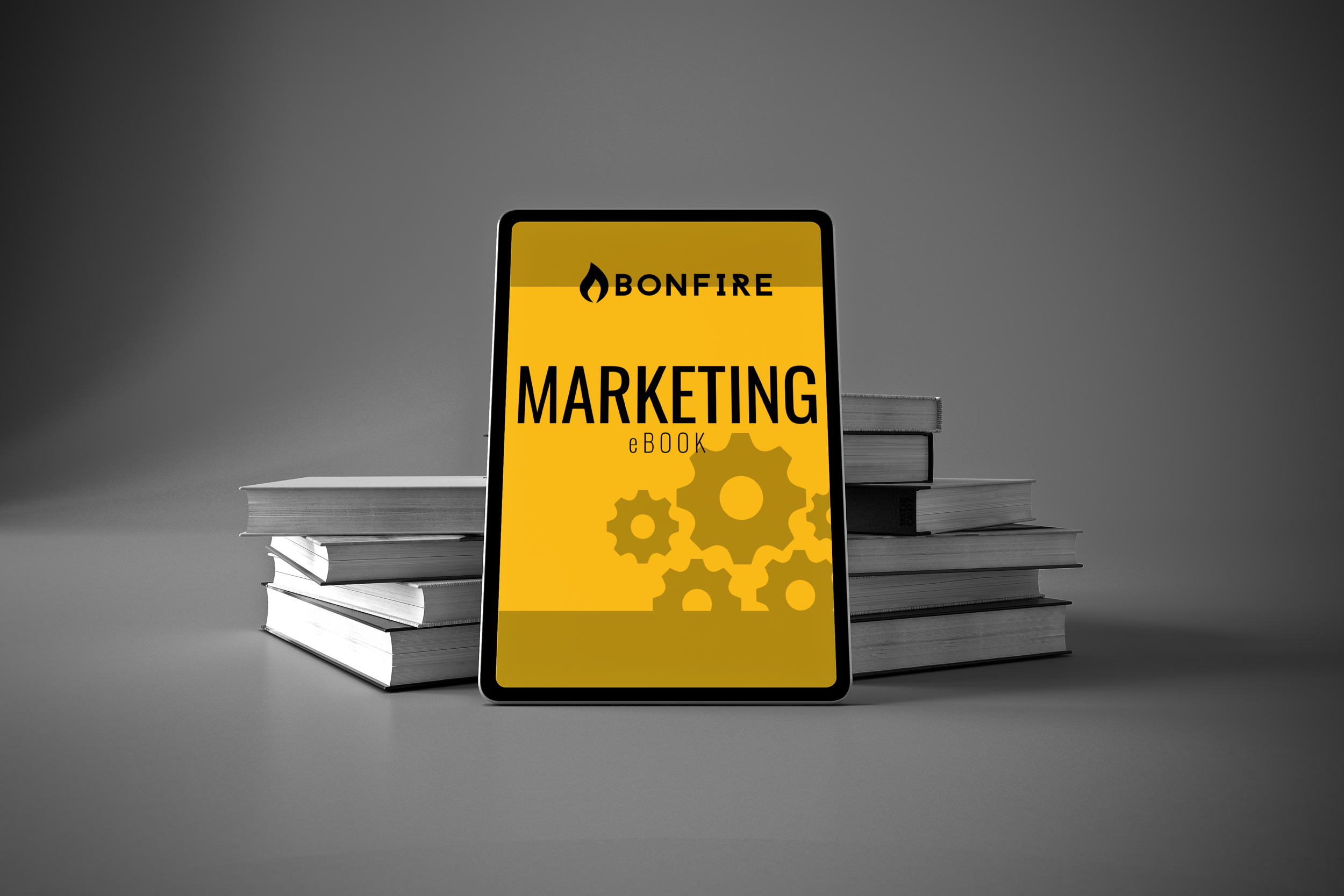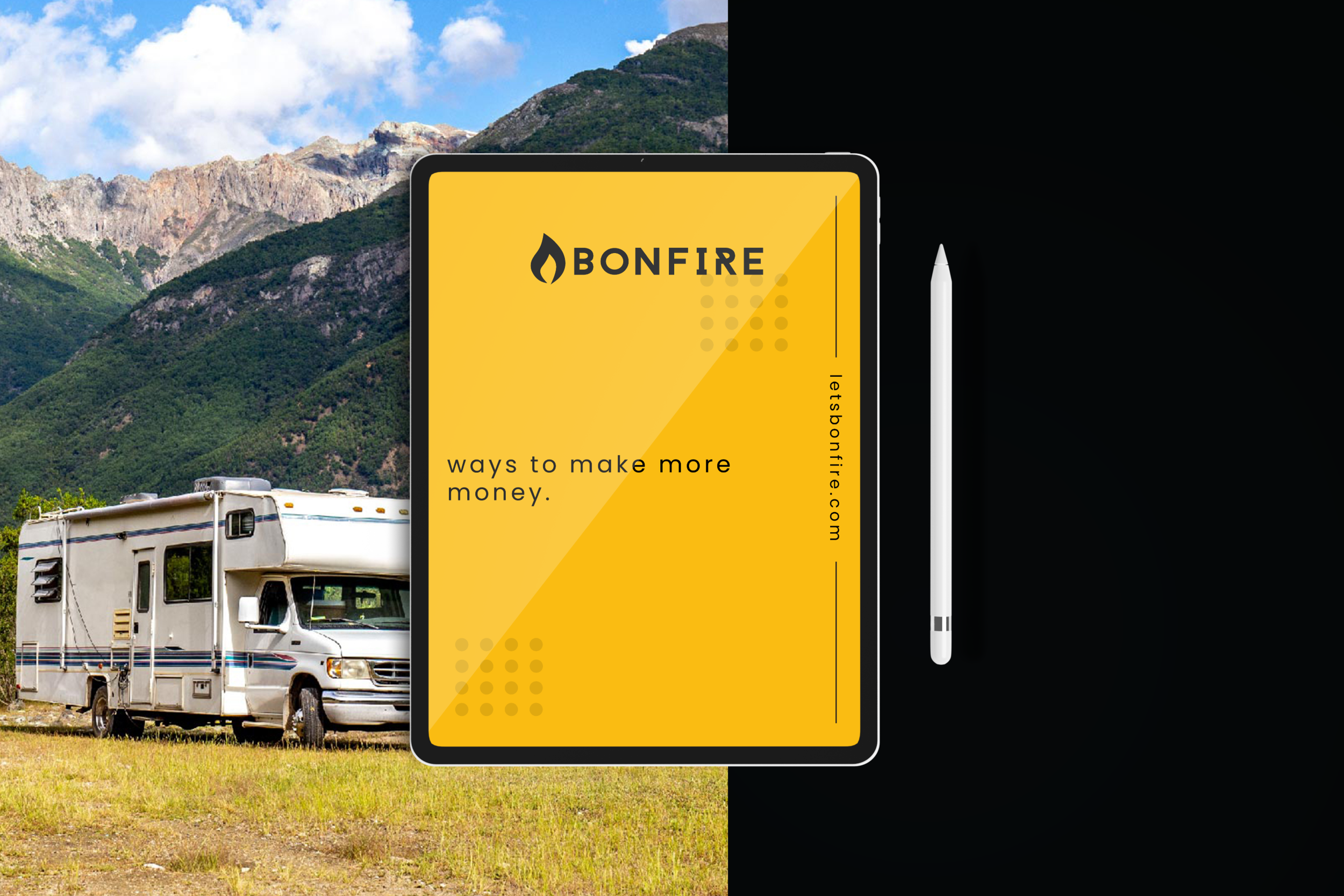2020 has been an unusual year. COVID-19 has changed the way we all live our lives and conduct our business. Being stuck at home has led to a surge in time spent on social media platforms to fill time. This has created increased opportunities to engage with potential audiences on these digital platforms. In fact 98% of those with access to internet or cell phone data report they are active on at least one social media platform.
So with an increase in time spent on social media, how can your RV Park or campground use these platforms to convert users into customers? In this blog we break down how to use social media to attract potential customers while also diving into more traditional methods such as leveraging local communities and how to gain more customers by collecting email addresses.
Where to Start?
Before we dive into running ads and collecting email addresses, we need to start out with what platforms your company needs to be on to run digital ads. The first thing you need to do is think about your target demographics and how to best reach them. According to Better Business Bureau, the majority of campers are either young families or older retirees ages 55+. Facebook, Instagram, and TikTok are the main social platforms for these age groups. Since TikTok ads are newer and have less targeting options, in this blog, we will focus on Instagram and Facebook.
Another platform you will want to consider is Google. EVERYONE uses Google Search. Google is complex and deserves it’s own blog. So, if you would like to learn more about Google Search, click here to read how to set up and run Google ads for RV Park and Campgrounds.
Now that we have pinpointed our platforms, how can you use these platforms to build awareness and convert those interested in camping into customers?
Discovering and highlighting your “USP”.
Before running ads, you need to determine what makes your RV Park or campground standout from the others. This could be as simple as an offer of reserve 2 nights, get the third free. Ideally, though, your park would have several USPs or Unique Selling Propositions. Some of these include access to hiking trails direct from your campground, kayak rentals, swimming pools, fire pits or a combination of many.
The more amenities you can offer, the better. One amenity we are seeing a rise in demand is WIFI. Since many people are traveling while working, having access to good and reliable wifi is becoming increasingly important. Click here to read about extending wifi in your RV Park and Campground.
Once you have defined your Unique Selling Proposition(s), we can move on to how to highlight these to attract potential customers.
Setting up and Running Digital Ads
For this blog we are going to assume your campground or RV Park has both an Instagram and Facebook page. If not, click here to learn how to set one up.
The next thing you will need is a website to send people to reserve their stay or to learn more about your RV Park or campground. Most people are used to booking online and want the ability to do so. The main pushback we hear around taking online reservations is around cancellations. If you are worried about cancellations, make a clear cancellation policy before checkout. We normally see a deposit of 50% which you don’t get back if cancelling less than 1 week before check-in.
Shameless Plug: Bonfire makes it easy to set up online reservations. In under 10 minutes, you can have the ability to take online reservations on a dedicated booking page. Click here to learn more.
Make sure your website is updated with updated images, callouts to your unique selling propositions and highlight the safety precautions you are taking for COVID-19. Click here to review a few precautions all campgrounds and RV Parks should be taking.
Now you are ready to craft your ads. The first thing you should do is identify the customers you are wanting to target. For instance, you would talk to retirees a different way than those with families. Below is an example of ads you would run to each:
Target Demographic: Parents of kids between the ages of 4-17 who are interested in camping and outdoor adventure:
Target Demographic: People 55+ who are interested in RVing.
Now that you have written your ads, it is time to place. When thinking about how much money to spend, you need to first identify how much you are willing to pay per reservation. If your average reservation is 3 nights at $20 per night, then you should feel comfortable spending $25 per reservation. Therefore, we would recommend spending $250 over a 1 week period, while tracking reservation volume. You can also ask those who made reservations how they found out about you. Then, take the number of reservations divided by $250 to make sure your cost per reservation is under $25.
Next, you need to set up your ad account and make sure you are targeting the correct audiences. Facebook and Instagram are both owned by Facebook. So, you only need to set up one ad account to target those both on Facebook and Instagram. Watch the video below to learn how to set up an ad account or click here for step by step directions.
First start by visiting this link: https://business.facebook.com/create
Now, we need to set up your campaigns. You will need to create two ad sets within your campaign to target two different audiences with the correct language. Watch the video below to learn how to set up an ad set or click here for step by step directions.
Note: Camping World did an extensive survey of all their customers and found something interesting. Most RVers and campers tend to travel within 4-6 hours from home. So, you could start out only targeting those living within 4-6 hours driving distance.
Collecting Emails & Nurturing Leads into Customers
For those people who do not want to book after their first visit to your website, you will want a way to entice them to give you their email address so you can email them later with more information about your park.
To do this, we like to use a popup builder called Privy, similar to the one you see on this site. We suggest showing a popup 10 seconds after a person visits your website with an offer for their email address. You need to make sure this offer is enticing enough that someone would want to give you their email address, such as the one below:
Once you have their email address, we suggest creating 3 follow up emails. The first email is the confirmation that they are entered into the contest to win 3 free nights. The second, would be an email letting them know they did not win (if they did not) but to let them know If they call to book a reservation, for every 2 nights they book, they get one free. You could easily switch this out with a free kayak rental with their reservation instead. The third email would be an email letting them know this offer would expire in 1 week. You can build these to go out automatically within the same email popup builder we suggested, Privy. Total cost for this tool is $30/m.
Turning Past Visitors into Ambassadors for your Campground
Sometimes people need a reminder to come back. A newsletter is a great way to do this, and MailChimp provides a free service to send newsletters to up to 2,000 emails. Just upload your list and you are off to the races. Now, it is one thing to invite past customers back, but providing them with an incentive to spread the word is even better. Offering guests a free night every time someone books a room from their referral is a great way to have past customers spread the word for you. Word of mouth is always the best marketing tool, with the second being email.
Using Your Community to Spread the Word
You and your staff work hard to attract visitors to your community. Not only does this tourism benefit you, but every business in your vicinity. By leveraging your ability to speak directly to these visitors, not only can you help make your guest’s experience amazing, but also help your bottom line and create repeat business.
Make friends with local establishments in your area. If they refer people to your park, they receive 10% of the total bill and vice versa. In order to increase the amount you make from other businesses (passive income), send follow up emails after a guest books their stay with suggestions of local restaurants and attractions you have partnered with. You can also offer brochures and business cards at your office. Guests will appreciate the advice and your partners will love the uptick in business. This relationship will just lead to more customers for all businesses involved.
In Closing…
Rv Park and Campgrounds are a little behind the curve when it comes to using digital marketing to gain new customers. Since many are not using social platforms to drive awareness and reservations, there is plenty of room for those who wish to step into these platforms, to take advantage of this gap.
Yes, these tactics are technical and can take a little time to implement. However, if done correctly, you should be able to scale reservations leading to even more revenue. If you have any questions about marketing your campground or RV Park, we are here for you. Bonfire is more than just a campground reservation and management software, but your partner in growth. Simply reach out to us by emailing howdy@letsbonfire.com.
Are there other companies who offer similar services? Yes. Click here to read about the pros and cons of the top software offers for campground management and decide for yourself if Bonfire is right for your campground! We are so sure you will find Bonfire to be the leader in Campground Management Software, we want to let you try it FREE for 30 days. Click here to book a walk-through of our software and start your free trial. Have questions? Again, you can send us an email anytime at howdy@letsbonfire.com.










